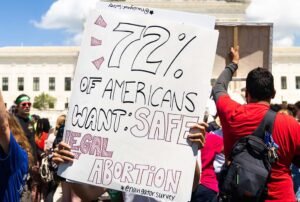
August 29, 2020; Texas Tribune and the Washington Post
The end of August was not kind to women’s healthcare. As political campaigns entered their final stretch before November voting, and COVID-19 flexed its muscles and pushed toward another spike in cases, leaders at both the state and national level used these factors to justify restrictions on women’s healthcare options and rights. There are so many already in place that adding to them seems like pouring fuel on the fire. But that is what happened in Texas and with a petition from the Trump administration to the US Supreme Court this past week. At the center of both lies the issue of abortion and control over a woman’s right to make her own healthcare decisions.
In Texas, it seems, the issue is all about funding. The legislature is proposing cuts of almost $3.8 million to programs that provide low-income Texas women with access to contraceptives and breast and cervical cancer screenings. At the same time, they are keeping the funding allocation of $59.9 million for the Alternatives to Abortion program, an increase from the previous budget. It is not clear what direct health services this program provides. It does counsel women against abortion and offer them financial planning, social service referrals, car seats, and baby formula. It served 66,408 women in Texas in 2019.
While the Republican-led legislature views these cuts as a cost-saving measure, women’s advocates say they will actually cost the state money. While these programs do not cover abortions, a health commission estimated that they saved Texas approximately $19.6 million a year in avoiding births with contraception and family planning. Providers are concerned about the loss of healthcare options for low-income families, especially for maternal health. Funding cuts could close much-needed clinics.
“We’re going to have more costs down the road with increased STIs [and] increased cancer diagnoses that went too long because people weren’t able to get screened. We’re going to have unplanned pregnancies as a result of not being able to access the contraceptive care people want and need.” says Kami Geoffray, CEO of Every Body Texas.
And as Texas looked to limit women’s healthcare options, so too did the federal government. Perhaps taking a cue from Texas, this past week the Trump administration asked the Supreme Court to reinstate a rule that would require women seeking medication abortions to visit doctor’s offices or clinics. This was a requirement that a federal judge in Maryland had lifted because of the coronavirus pandemic. Because most women take these abortion-producing pills at home, the judge felt that making an in-person visit during a pandemic to obtain the medication was overly burdensome. The injunction against this requirement was nationwide.
The argument to lift the injunction centered on women’s health. Acting Solicitor General Jeffery B. Wall wrote, “The FDA has made, and continuously adhered to, the judgment that these requirements mitigate serious health risks associated with the drug, which can increase if the patient delays taking the drug or fails to receive proper counseling about possible complications.”
Sign up for our free newsletters
Subscribe to NPQ's newsletters to have our top stories delivered directly to your inbox.
By signing up, you agree to our privacy policy and terms of use, and to receive messages from NPQ and our partners.
His argument is countered by the medical community, which opposes the FDA on this. Those challenging Wall note that these two drugs, mifepristone and misoprostol, are the only drugs that the FDA requires be dispensed in a clinical setting, although patients may self-administer it at home.
“Forcing patients to travel during a pandemic just to pick up a pill is irrational and dangerous, which is why the medical community uniformly opposes this senseless rule. We hope the Supreme Court will deny the Trump administration’s cruel attempt to score political points by putting people seeking essential reproductive healthcare at needless risk,” said Julia Kaye, staff attorney at the American Civil Liberties Union’s Reproductive Freedom Project.
Similar statements about protecting women seem to be coming from both Washington DC and Texas. In Texas, State House Speaker Dennis Bonnen said these cost-cutting proposals were to maintain crucial functions and “access to care without compromising our priority to protect the lives of the unborn.”
But in making their budget cuts in response to the COVID-19 crisis, Texas health officials came up with $15 million in direct cuts to programs, with a quarter of those coming from women’s health. And at the federal level, the government seems to be doubling back on rules for obtaining drugs that the FDA had relaxed during the pandemic (including some opioids).
Kaye writes, “Because of the [FDA] requirements, patients who have already been evaluated, counseled, and prescribed mifepristone by a certified clinician using telemedicine or at a prior in-person visit cannot avoid COVID-19 risks by obtaining mifepristone by mail, but are forced to travel to a clinical setting solely to pick up a pill and sign a form.”
In each of these cases, it is women, especially low-income women and women of color, who will be getting the short end of the stick in terms of access to a full range of healthcare options and safety in receiving them during the pandemic. And it is not women, in most cases, who make the majority of decisions in determining these rules, budgets, and laws.—Carole Levine













